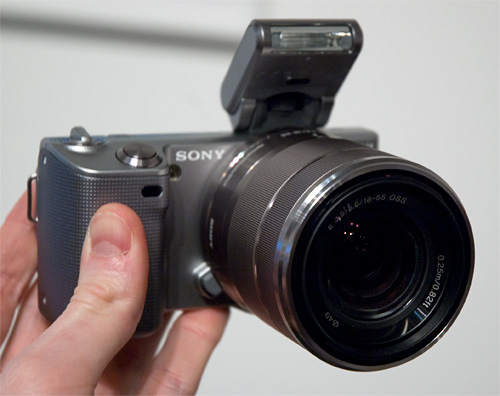
By Andrew Liszewski
It’s no surprise to see Sony wanting to grab a chunk of the burgeoning micro four thirds interchangeable-lens P&S camera market, but it is a surprise to see that their first two entries, the NEX-3 and the NEX-5, actually use an APS-C format sensor which is also used in a wide range of prosumer DSLRs.
Both of the 14.2MP NEX-5 and NEX-3 look amazing and are incredibly compact, an advantage they take from their P&S roots, while at the same time providing a photography experience and results akin to what you’d get from a full-sized DSLR. I had a chance to play with both of the cameras at their official launch this morning, so please take a few moments to check out my hands-on look after the jump. (Don’t let me dragging myself out of bed at 6:30am be in vain!)
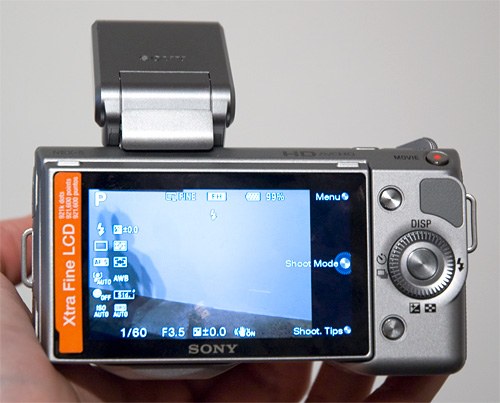
There are subtle differences between the NEX-5 and NEX-3 that I’ll point out along the way, but one of the more notable ones is that the NEX-3 is limited to recording video at 720P as MP4 files, where as the NEX-5 can do 1080P as MP4s or AVCHD files. So if you need to capture full-res HD, but not necessarily at 24P, your decision is already made for you. And being the ‘high-end’ model the NEX-5 features a body made from magnesium alloy, while the NEX-3 is a polycarbonate plastic, though it certainly doesn’t feel cheap.
But they both feature the same glorious 3-inch, 921,600 pixel LCD display on the back. So text, graphs and meters all look extremely crisp, while colors look vibrant. However, it’s not a touch screen, so changing functions and various settings will require heavy use of the buttons and scroll wheel to the right of the display.
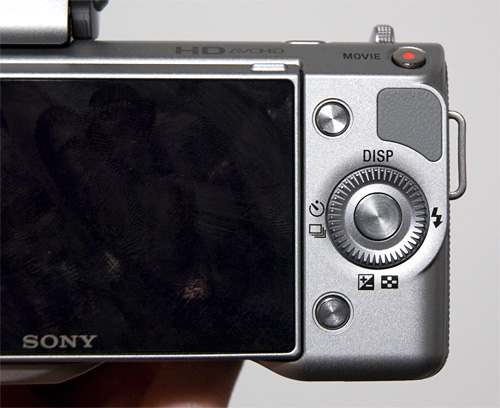
The unlabeled round buttons serve as ‘soft’ buttons in that they change their function depending on where you are in the menu system, or what you’re viewing on the display. It’s a little bit confusing at first since you have to be mindful of what their labels are on the display, but after just a few minutes you get the hang of it.
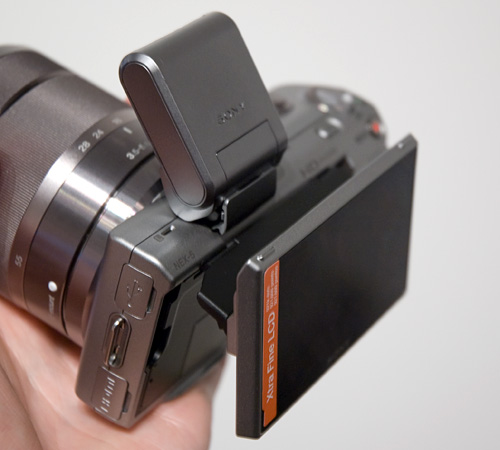
The LCD also features a clever double-hinged pivot mechanism that allows you to tilt the display up or down for taking photos above your head or lower to the ground. It’s pleasantly stiff and sturdy, and is pretty much essential functionality for a live-view camera like the NEX-5 & NEX-3.
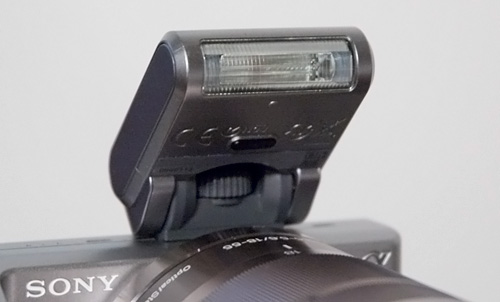
Now unlike their competitors who have managed to engineer and build extremely clever pop-up flashes into their camera bodies, neither the NEX-5 nor the NEX-3 have a built-in flash. Instead, they both come with the external compact flash pictured here which attaches to an adapter port on the top of the camera.
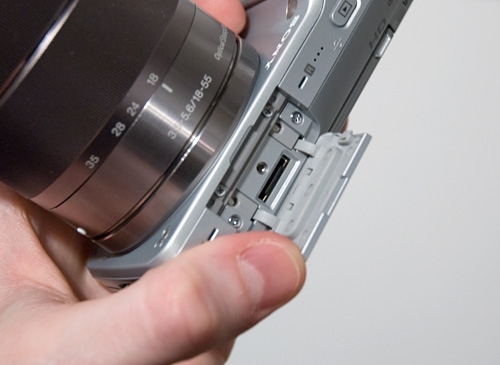
The proprietary port, which is hidden under a door when not in use, provides varying levels of functionality, and includes a small screw hole allowing accessories to be securely tethered to the camera body.
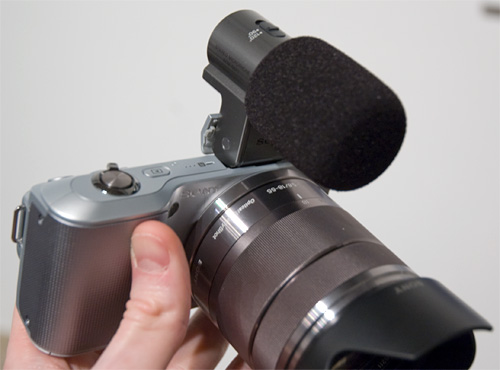
I’m not entirely sure what else this proprietary port can be used for, but in addition to the flash accessory, Sony also had a couple of NEX-5s on display sporting an external stereo microphone which was a vast improvement over the camera’s built-in mic.
Unfortunately one of the more glaring missing accessories for both cameras is an electronic viewfinder. Now during their presentation Sony emphasized the special design of the camera’s LCD display making it easier to see in direct sunlight, but an LCD is an LCD, and I’m sure many photographers would at least like to have the option of attaching an electronic viewfinder. Now given the mystery port on top of the camera can handle audio, I have to wonder if it’s also capable of supporting an EV accessory down the line.
And just to note, one of the sample cameras did have an optical viewfinder accessory attached, but it just wasn’t the same.
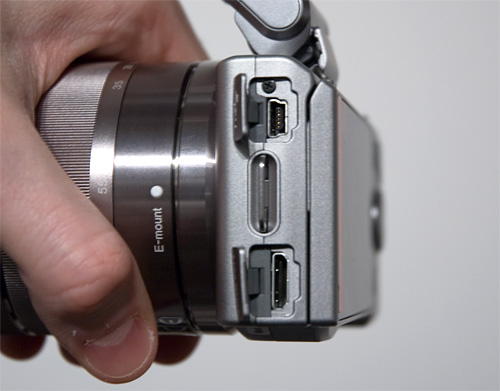
As for other connectivity, on the side of both cameras you’ll find a USB port and a full-sized HDMI connection for watching videos or browsing photos on your hi-def TV. And not pictured is the battery/memory card compartment on the underside. According to a Sony rep, the company developed a new rechargeable battery for both cameras, and even though they sit in the camera’s grip which is the largest part of the body, they’re still considerably smaller than the batteries you’ll find in a DSLR. And since you’re pretty much reliant on the LCD being on all the time, the battery is only rated for about 330 photos.
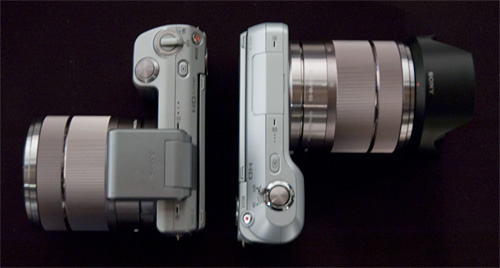
Here’s a shot of the NEX-5 (on the left) sitting back-to-back with the NEX-3 (on the right) showing the ever so slight differences in size and button layout. Besides the HD video limitations, the NEX-3 is also just a touch larger than the NEX-5, and for some reason the shutter release button is integrated into the power button, where as on the NEX-5 it sits by itself.
And comparing the two models, the only other difference I could find was an IR port on the NEX-5 that wasn’t on the NEX-3. Apparently the NEX-5 will come with a wireless remote, though it’s not even available as an option on the NEX-3 given the missing IR port.
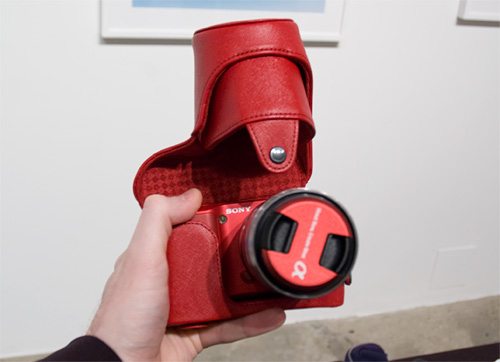
However! While both cameras are available in either black or silver finishes, the NEX-3 does manage to edge out the NEX-5 when it comes to color choice with this blinding red option. And as you can see, Sony’s already made sure there’s an entire line of matching accessories and cases for the new cameras that will most likely be ready when they’re available in June.
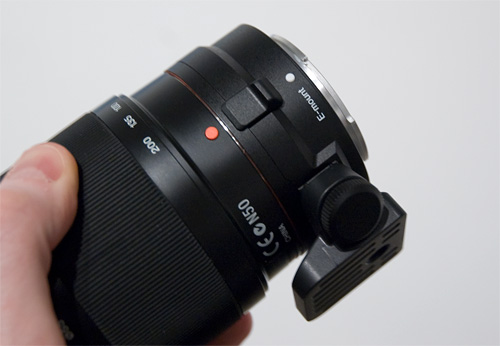
If you’re already a Sony Alpha DSLR user, you’ll probably be happy to hear that you’ll be able to use your A-mount lenses on the NEX-5 and NEX-3 with this E-mount adapter that will sell for somewhere around $230 if I recall correctly. It also has its own removable tripod mount that will help when you have a particularly large and heavy lens attached to either of the very thin NEXs.
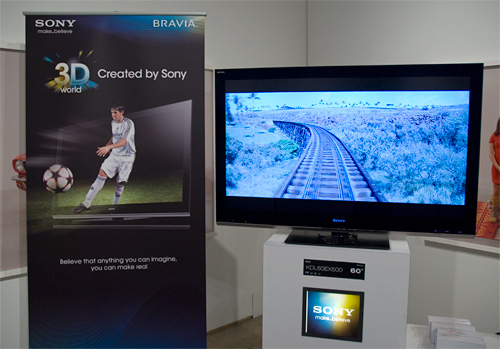
Of course what’s a modern gadget without 3D being crammed in there somewhere? One of the more clever software features of the NEX cameras is something Sony calls ‘Sweep Panorama’ which is kind of self explanatory. You just hold down the shutter while moving the camera in a smooth arc and it will capture a series of images which will automatically be stitched together into a panorama. But taking that one step further, an upcoming firmware update for the NEXs will actually let you use the Sweep Panorama functionality to capture images in 3D.
They had a demo running on one of Sony’s KDL60EX500 3D Bravia TVs and while the results weren’t mind-blowingly stunning, the photo definitely had some depth to it. Even if just moving your head slightly from side to side resulted in some crazy parallax movements between the foreground and background. I doubt it’s a feature that people will be running out and buying the camera specifically for, but it’s a clever way to generate 3D imagery without having 2 dedicated lenses.
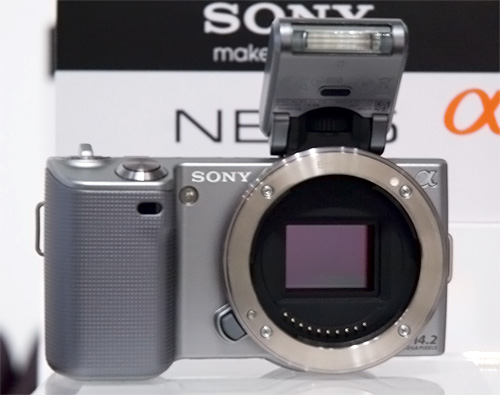
While I love the idea of a P&S-sized camera with the flexibility of interchangeable lenses, there is one thing that worries me. Sony is definitely targeting the NEXs at the consumer market, as is apparent by the camera’s use of terms like ‘background focus’ instead of depth-of-field, and copious help files designed to coach a beginner through the basics of photography.
I just hope they also educate new users to be particularly careful when swapping lenses, since like on a DSLR, it basically leaves the sensor completely exposed in the process. In fact, on a DSLR there’s at least a mirror there to protect the sensor while the lens is removed, but on these compact interchangeable-lens cameras that extra line of defense doesn’t exist. As you can see here, once the lens is removed, the sensor is laid bare and unprotected, ready to collect dust and particles that will have an adverse effect on photos.
The cameras do have a built-in sensor vibration mechanism to shake off any dust particles, but that’s useless when it comes to an accidental fingerprint. And the thought of someone trying to clean the sensor with a bit of cloth and spit makes me die a little bit inside. It’s unfortunately the nature of the beast when it comes to any digital camera with a removable lens.
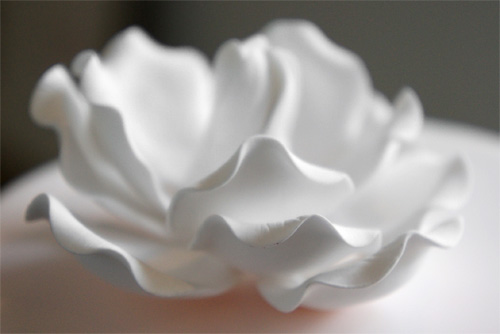
Finally, I unfortunately didn’t have a lot of time or flexibility when it comes to actually shooting with the cameras, since at the launch there were only 4 of them on hand that were ‘approved’ for taking pictures with. So things like low-light testing were out of the question. But I have to say, being able to really control the depth-of-field on a camera that can be slipped into a pocket is an enticing prospect. Being an avid DSLR user there are minor limitations on the NEX cameras that means I’m not ready to trade in my Nikon just yet (limited manual controls, confusing menus, autofocus speed etc.) but as an everyday camera that’s easy to carry I can definitely see the appeal.




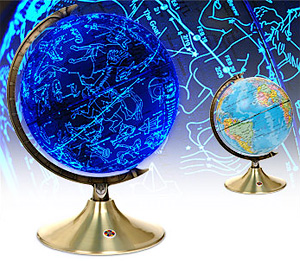
Exciting to see the lines getting blurred between professional SLRs and cameras we just slip into our pockets